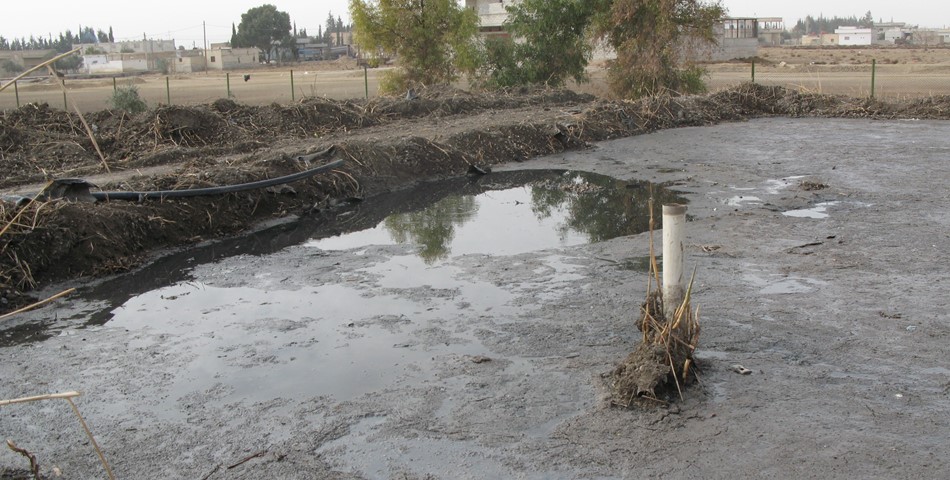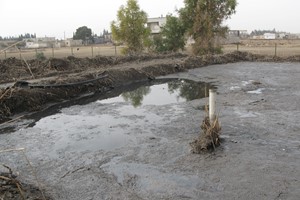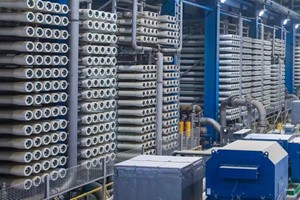Wastewater treatment process generates huge amounts of industrial sludge. Different industries, especially in the manufacturing sector, release wastewater in large amounts which contain chemical constituents and microorganisms.
This water is reduced through various processes to form sludge which further undergoes treatment for volume reduction, stability and safe disposal. It also helps to minimize the pathogen content in the sludge which renders safe disposal. Increasing needs for sludge removal will fuel the industrial sludge treatment chemicals industry demand in coming years.
Industrial sludge refers to a mixture (both solid and liquid) which is produced or generated during wastewater treatment. A sludge mainly contains water along with various chemicals, organic materials, pathogens, and other microorganisms. Industrial sludges comprise of pollutants that include heavy metals, organic pollutants, and pathogens; and compounds that are of agricultural value such as phosphorus, organic matter, calcium, potassium, nitrogen, sulfur, and magnesium.
Industrial sludge treatment chemicals market Size was valued over USD4.5 billion in 2016 and the industry will grow by a CAGR of around 6 percent up to 2024. Research analysts forecast the global industrial sludge treatment chemicals market to grow at a CAGR of 5.42 percent during the period 2017-2021. According to an analyst from Technavio, one trend in the market is increasing use of polymer chemicals for dewatering.
The treatment of sludge in industries can be done using various methods such as thickening, stabilization, incineration, drying, and dewatering. The costs associated with sludge treatment and sludge removal from wastewater are considered to be roughly the same. The global industrial sludge treatment chemicals market has witnessed an increase in the use of polymer chemicals that are used in high volumes for the reduction process associated with dewatering in industries.
One driver in the market is increasing demand for treatment of wastewater backed by growing health and environmental awareness. The global industrial sludge treatment chemicals market is strengthened by the increasing global demand for water, backed by rapid-paced urbanization and industrial development. The unavailability of freshwater resources has led to the increase in the number of regulations on the use of water and on the discharge from industries.
Organizations and industries are now required to recycle and treat wastewater before discharging it into the environment. Further, according to Market Research, that one challenge in the market is high cost of industrial sludge treatment chemicals negatively impacting the market. The global industrial sludge treatment chemicals market is negatively influenced by the high sludge treatment costs and has significantly influenced the need for higher volumes of industrial sludge treatment chemicals.
Furthermore, the growing chemicals and sludge treatment equipment prices are continuously increasing the energy costs and disposal requirements. These are crucial for highly price sensitive industry participants, who put a lot of attention to reduce their overall production costs. Furthermore, the operational costs associated with sludge treatment plants are high and restrict the market growth.


Development in new sludge removal technologies such as automated chemostat treatment (ACT), KemiCond process, and extracellular polymers extraction from activated sludge with the help of cation exchange resin will drive the market in the forthcoming years. ACT simplifies the process treatment by reducing chemical usage and bio sludge as well as black sludge reduction making it a novel method for sludge treatment.
KemiCond process is further divided into three steps, namely, acidification, oxidation and flocculation. This enables the dewatering by breaking down the water and retaining structures formed in the sludge. Development of such innovative and cost-effective solutions is likely to propel the industrial sludge treatment chemicals industry demand. Global Market Insights states that increasing development in machinery and other processes for environmental concerns is on a rise owing to government regulations.
Improvement and integrated mechanisms in waste water treatment plants such as uncoupled metabolism, endogenous metabolism, and microbial predation, to produce lesser sludge might create hindrance for the market in future years. Industrial sludge treatment chemicals market is segmented on the basis of sludge type as activated, primary, mixed and other sludges which include tertiary, etc.
Activated sludge is nothing but a process of treating waste industrial water by aeration. Activated sludge held a major share in the industrial sludge treatment chemicals industry and was valued close to USD2 billion in 2016. Unlike activated sludge formed from secondary sewage treatment, primary sludge is formed during the primary sewage treatment and does not require aeration.
It is produced through the mechanical wastewater treatment process where the sludge composition depends upon the catchment area. The segment held a market share of over 20 percent in 2016 and will grow at a moderate rate. According to Global Market Insights, the market has been classified on the basis of process treatment as dewatering & drying, conditioning & stabilization, thickening, and digestion treatments.
The dewatering and drying segment will grow at a decent CAGR of over 6 percent in the coming years. Based on process chemicals, the industrial sludge treatment chemicals market is segmented into four broad categories namely flocculants, coagulants, disinfectants, and others. The others segment includes activated carbon, defoamers, etc. Flocculants are chemicals that help flocculation used in water treatments to improve the filterability or sedimentation of small particles.
The segment will hold a major share in future and accounted for close to 35 percent market share in 2016.Considering end-user industries, the market is segmented as automotive, oil & gas, metal processing, food & beverages, pulp & paper, personal care & chemicals, electronics, and others. The others segment consists of textile industry, paints & coatings industry, etc. Personal care and chemicals industry will grow at a highest CAGR in the of over 6.5 percent coming years owing to rising usage of grooming products.
Industrial sludge treatment chemicals industry will witness significant growth in the coming days owing to the increasing number of industrial activities. Rising manufacturing activities leads to the formation of sludge which will further propel the product market demand. Governments in several nations have initiated and prepared certain guidelines for the recycling of industrial sewage and treatment by the use of environment friendly process chemicals. This in turn will drive the global market in future years.











